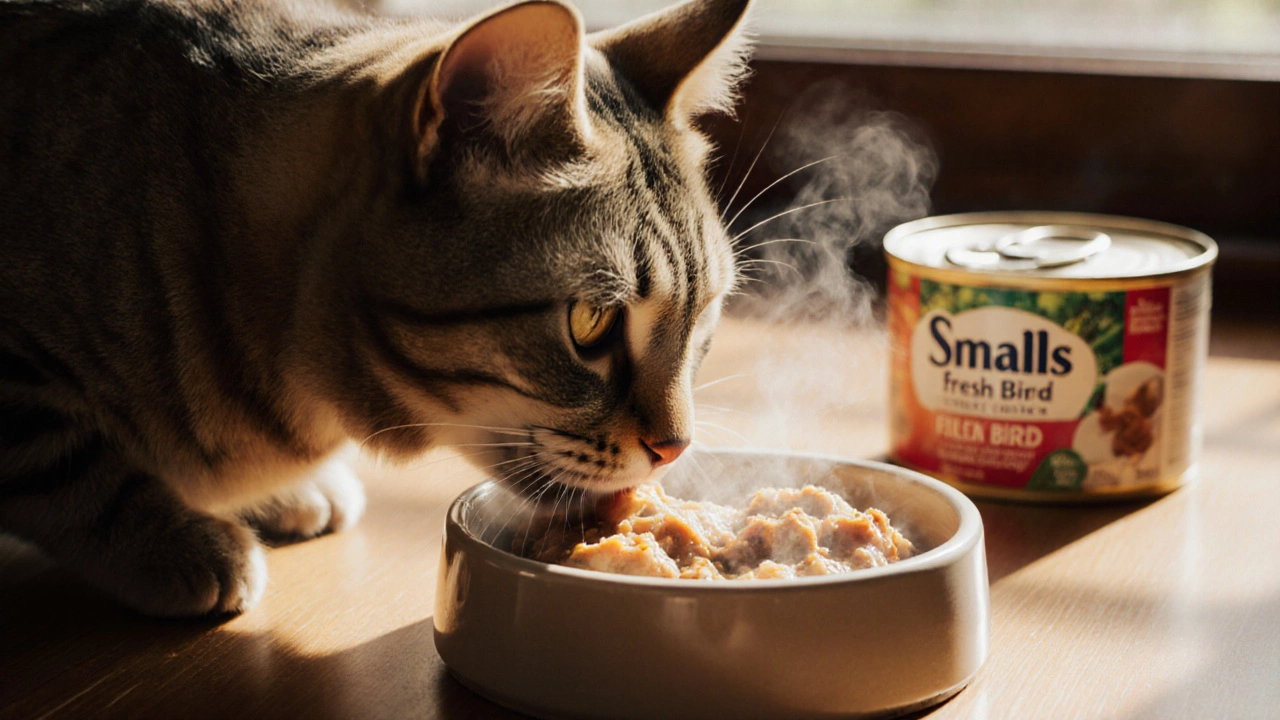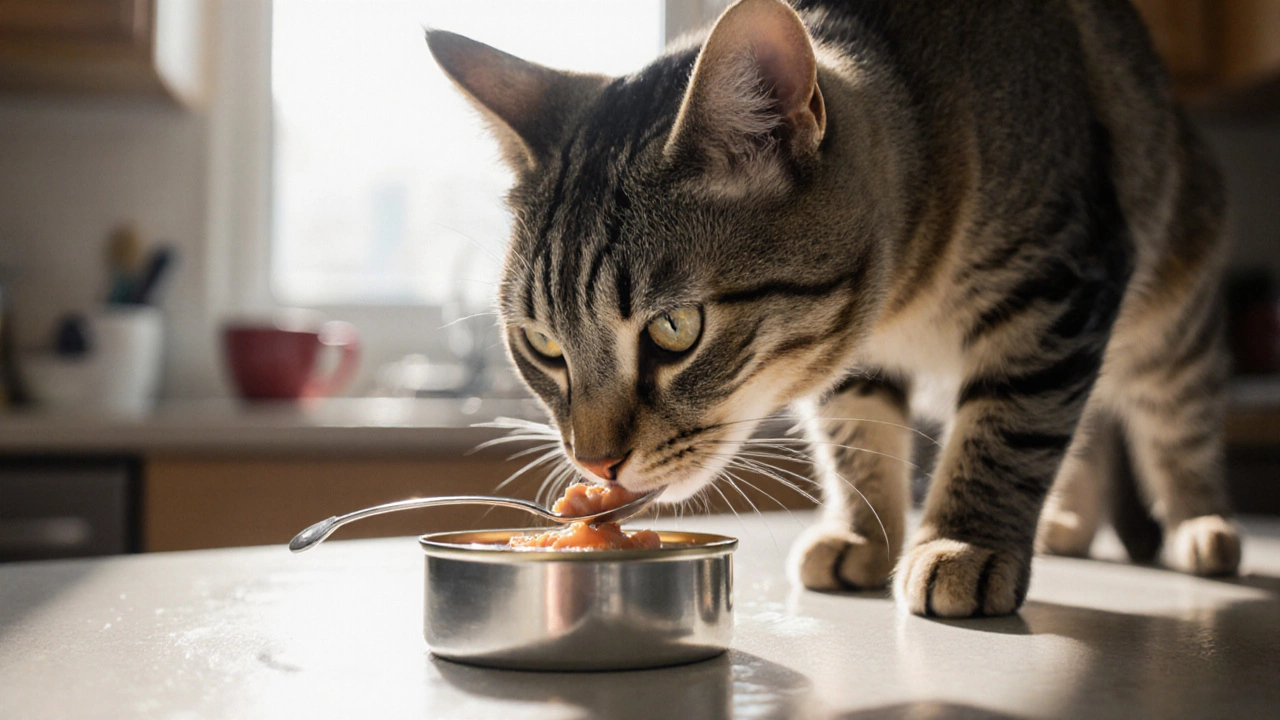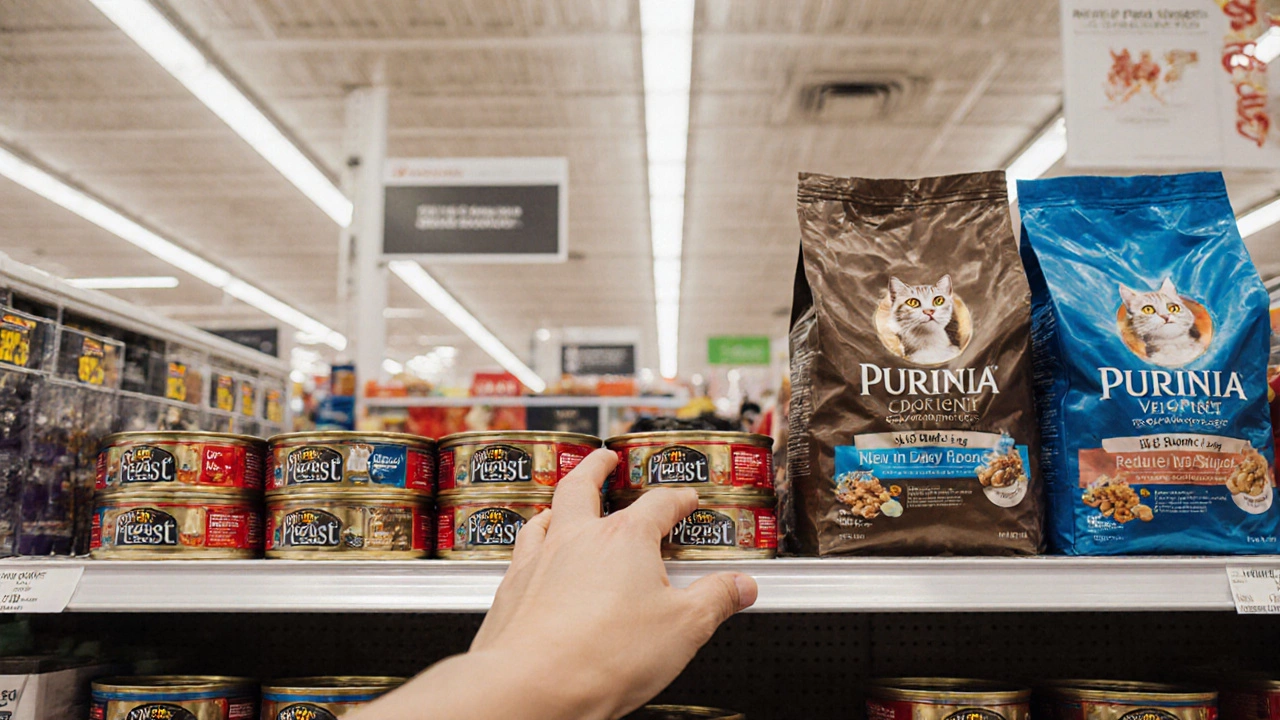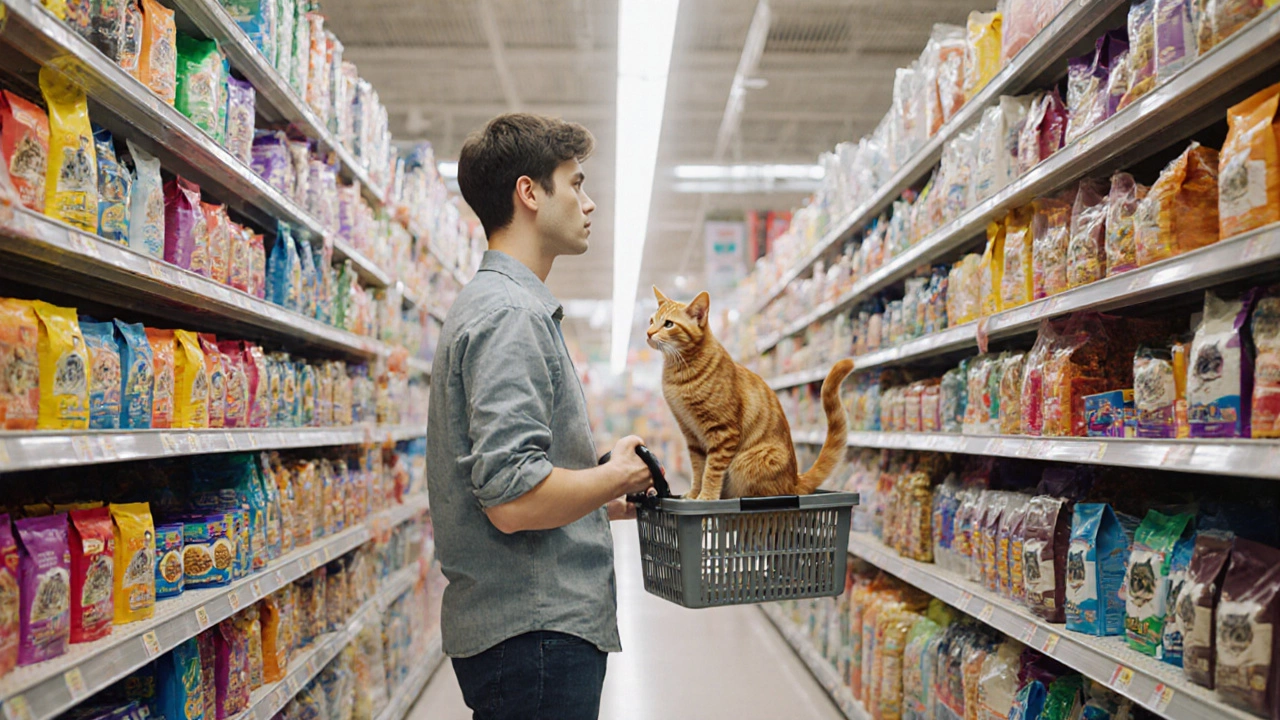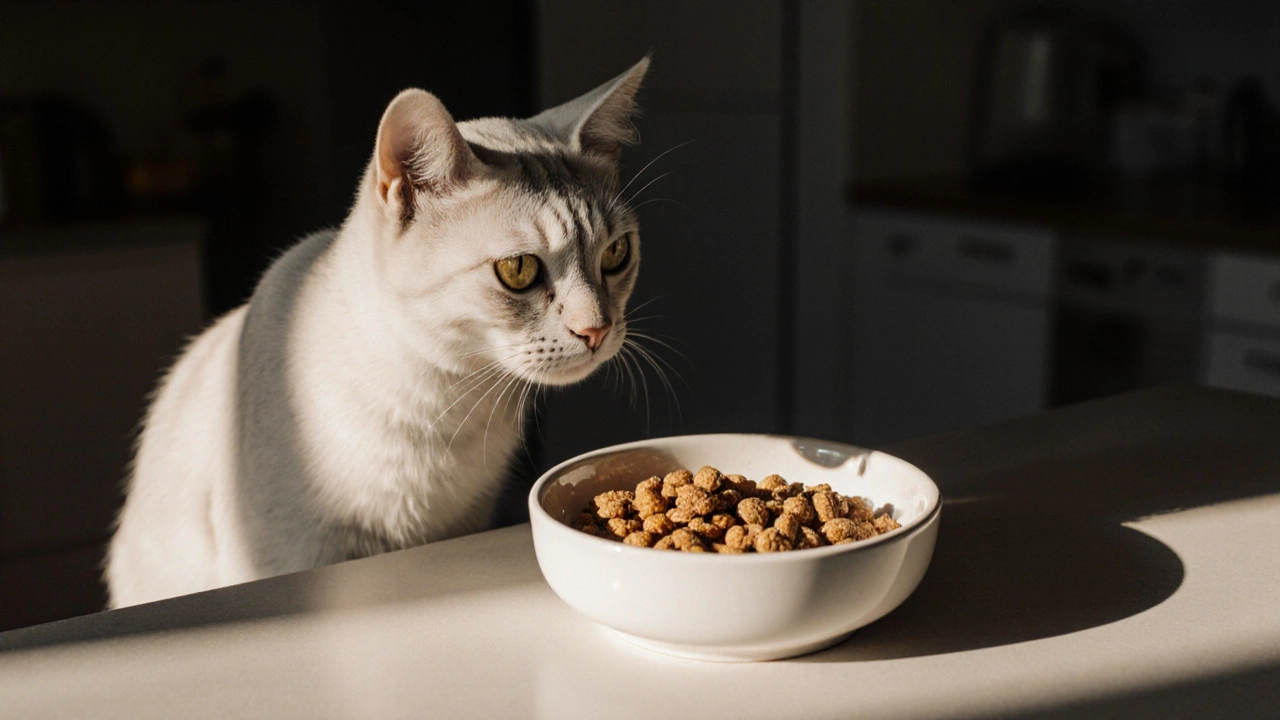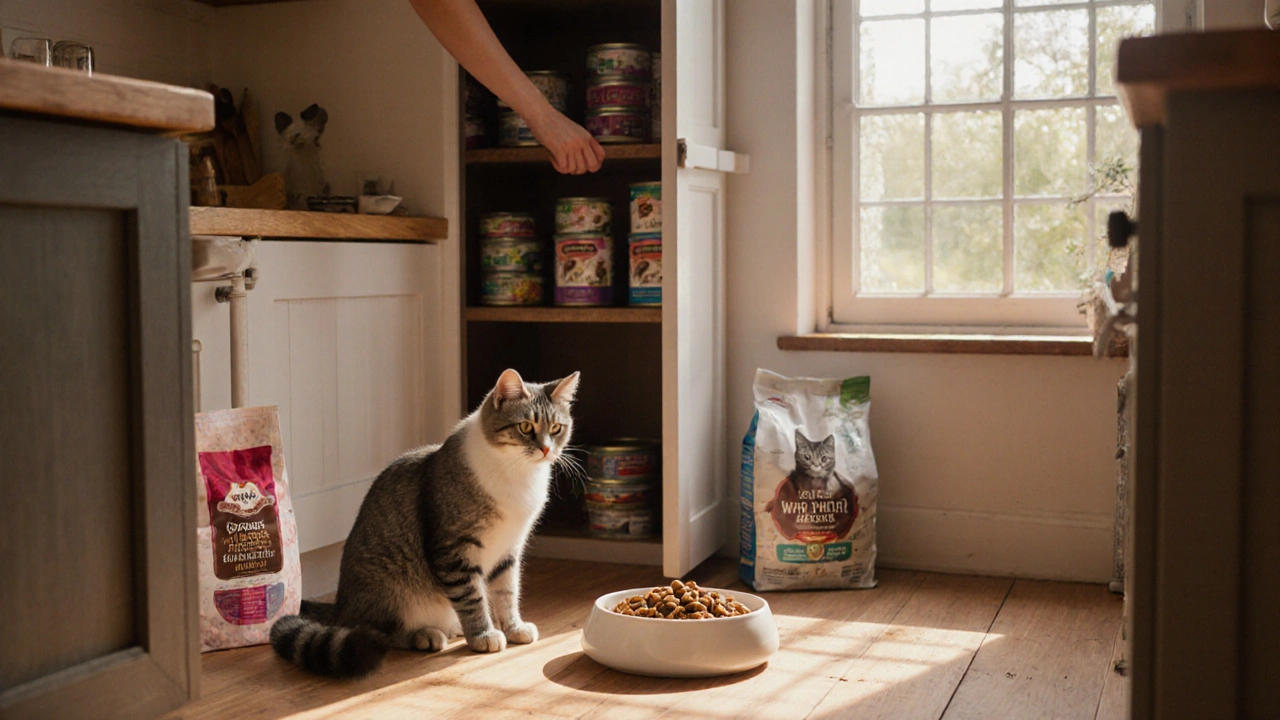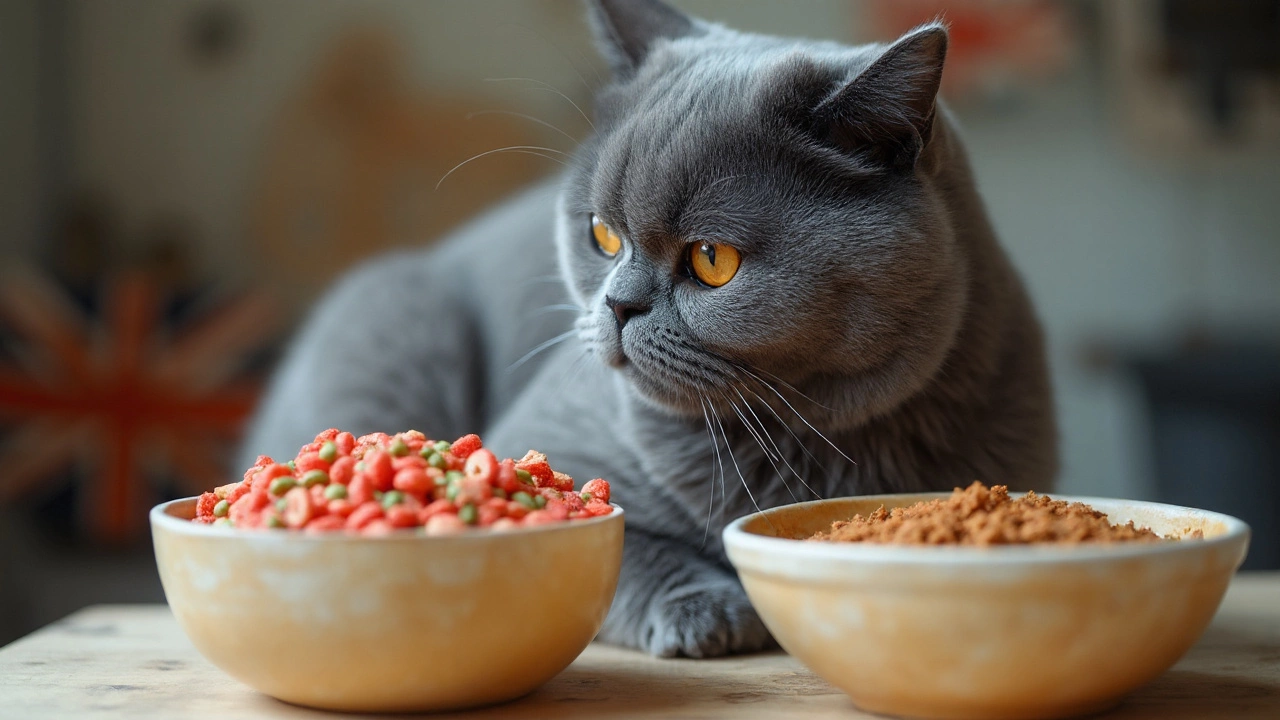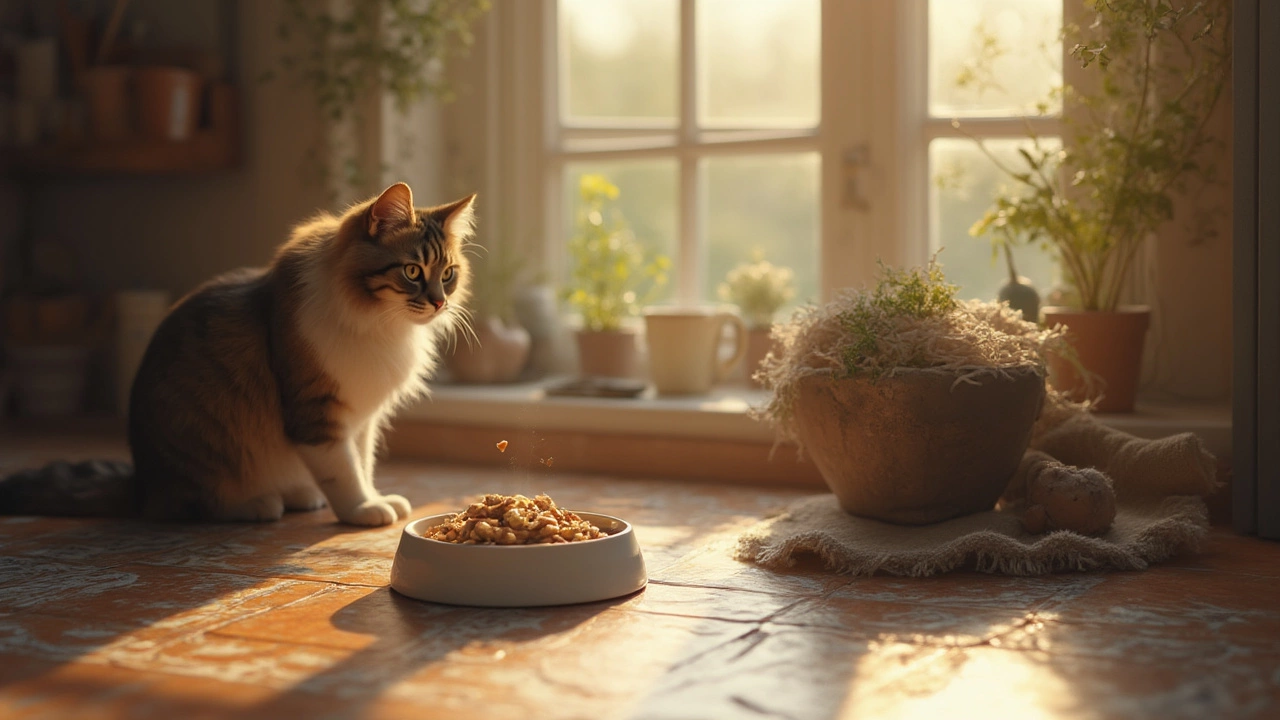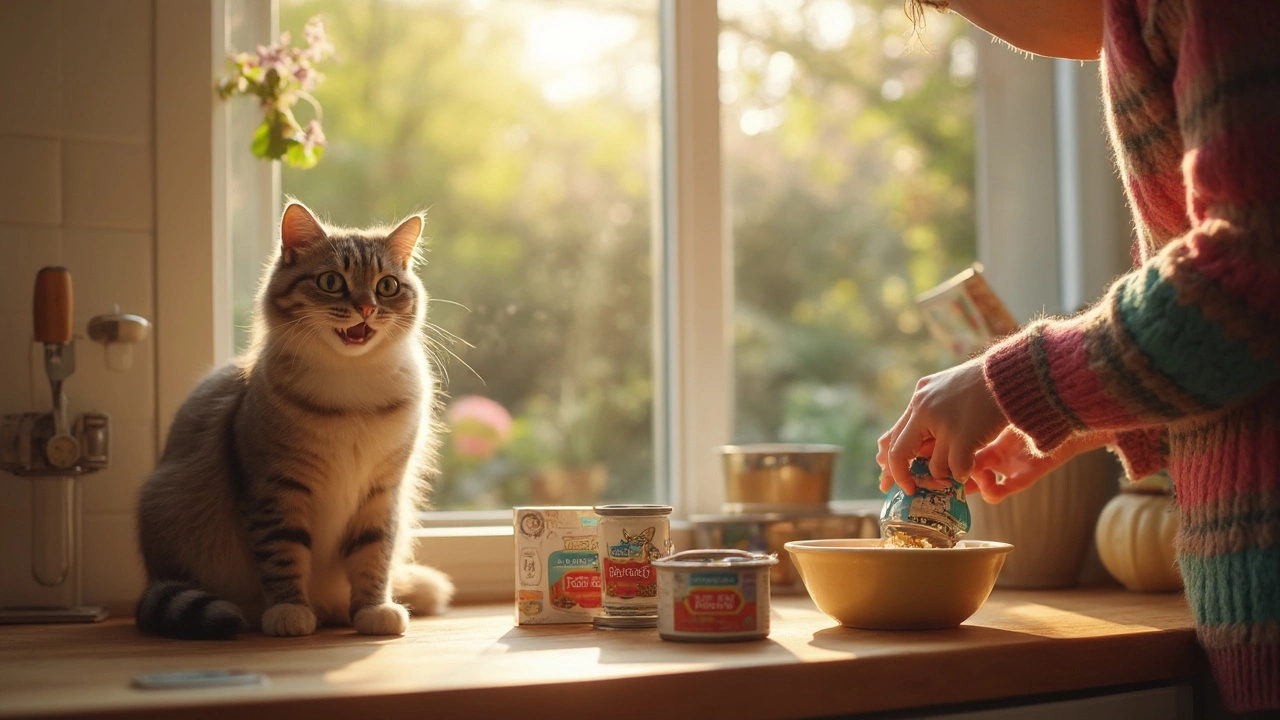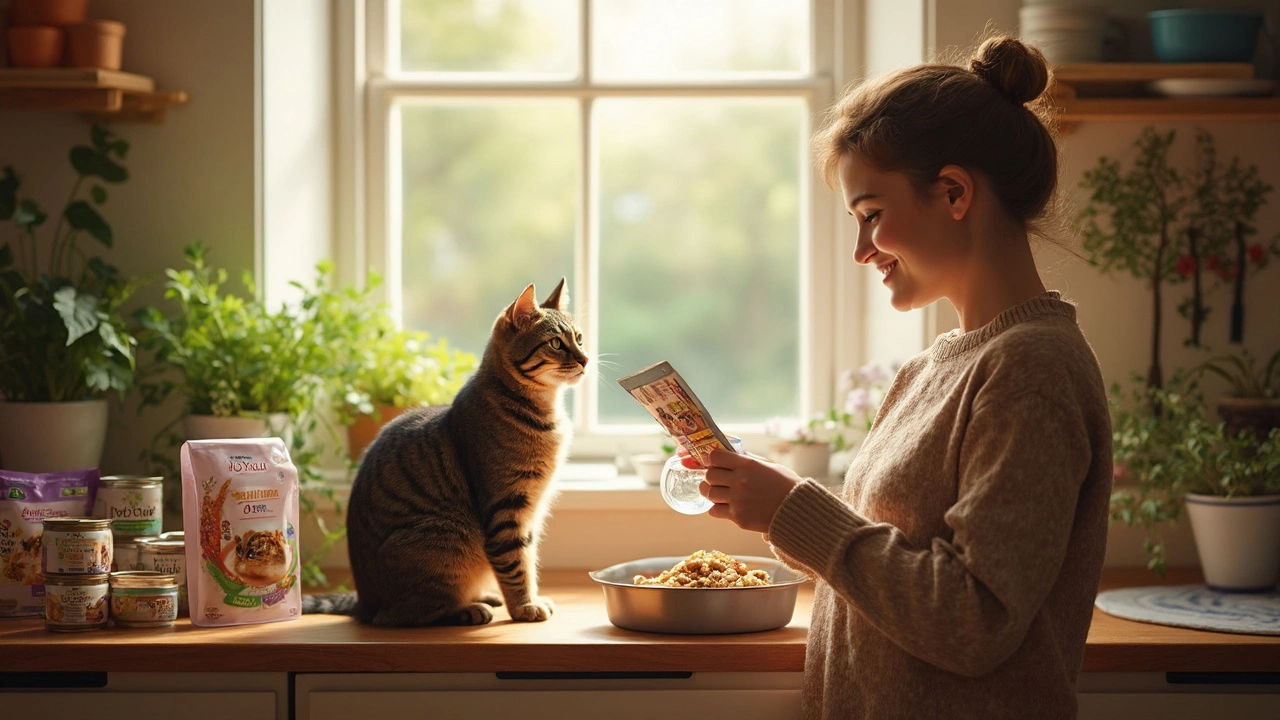Cat Nutrition Basics: How to Feed Your Feline for Health and Happiness
Feeding a cat might seem simple, but getting the nutrition right can make a huge difference in energy, coat shine, and long‑term health. In this guide we’ll break down what cats really need, point out common pitfalls, and give you a clear plan you can start using today.
Understanding Your Cat's Nutritional Needs
Cats are obligate carnivores, which means they thrive on animal protein and need very little plant matter. A high‑quality cat food should list real meat (chicken, turkey, or fish) as the first ingredient and provide at least 30 % protein on a dry‑matter basis. Look for balanced levels of taurine, arachidonic acid, and vitamin A – nutrients cats can’t make on their own.
Dry kibble is convenient, but many formulas rely on fillers like corn or wheat that add carbs without nutritional payoff. While some cats handle a bit of grain, excessive carbs can lead to weight gain and urinary issues. Wet food, on the other hand, usually contains more moisture (up to 80 %) and mimics a natural prey diet, helping with hydration and kidney health.
If you prefer a raw or homemade approach, make sure you’re covering all essential nutrients. Missing taurine, for example, can cause heart problems within weeks. Many pet owners choose a commercial base and add safe supplements to keep things simple and safe.
Practical Feeding Tips for Everyday Life
Start by checking the feeding guidelines on the bag, but treat them as a starting point, not a rule. Your cat’s age, activity level, and body condition will shift the ideal portion size. A 10‑pound adult cat typically needs around 200‑250 kcal per day, which translates to roughly one 3‑oz can of wet food or a half‑cup of quality dry kibble.
Set a schedule that matches your routine. Most cats do well with two meals a day – one in the morning and one in the evening. Kittens need three to four meals, while senior cats might prefer smaller, more frequent portions to aid digestion. Use a measuring cup or a kitchen scale to keep portions consistent and avoid accidental overfeeding.
Watch the ingredient list for hidden threats. Some dry foods contain artificial colors, excessive salt, or meat‑and‑bone meal that offers low‑quality protein. If you see terms like “by‑product” or “meal” without a clear source, consider swapping to a cleaner brand.
Finally, keep fresh water available at all times. Even cats that love wet food need a water bowl, especially in winter when they may drink less. A pet fountain can encourage drinking and reduce the risk of urinary stones.
By focusing on real meat, watching portion sizes, and avoiding unnecessary fillers, you’ll give your cat a diet that supports a shiny coat, playful energy, and a longer, healthier life. Start with one small change – perhaps swapping a cheap dry kibble for a high‑protein wet option – and watch the difference it makes.
Posted By Bryndle Redding On 15 Dec 2025 Comments (0)
What Is the Healthiest Cat Food for Indoor Cats?
The healthiest cat food for indoor cats is high in animal protein, low in carbs, and wet to support hydration. Avoid fillers and artificial additives. Wet or freeze-dried food is best for urinary and weight health.
READ MOREPosted By Bryndle Redding On 27 Nov 2025 Comments (0)
Is Fancy Feast Okay for Cats? Vet-Approved Facts You Need to Know
Fancy Feast isn't all bad, but many formulas are low-quality. Learn which varieties are safe for cats, what to avoid, and better alternatives that won't break the bank.
READ MOREPosted By Bryndle Redding On 20 Nov 2025 Comments (0)
What Is the Healthiest Wet Food for Cats? Expert Guide to Choosing the Best Option
Discover the healthiest wet food for cats based on real nutrition science. Learn what ingredients to look for, which brands deliver real value, and how to switch safely for better long-term health.
READ MOREPosted By Bryndle Redding On 17 Nov 2025 Comments (0)
Is Tuna Good for Cats? What Veterinarians Really Say
Tuna might be a cat favorite, but it's not a healthy daily food. Learn why vets warn against regular tuna feeding and what to feed your cat instead for long-term health.
READ MOREPosted By Bryndle Redding On 26 Oct 2025 Comments (0)
Purina vs Fancy Feast: Are They the Same Company?
Find out if Purina and Fancy Feast belong to the same company, their ownership history, brand differences, and why it matters for cat owners.
READ MOREPosted By Bryndle Redding On 15 Oct 2025 Comments (0)
The #1 Best Cat Food in 2025: Expert Review and Comparison
Discover the #1 best cat food of 2025, why it tops the list, how it compares to other top brands, and expert tips for choosing the perfect diet for your feline.
READ MOREPosted By Bryndle Redding On 8 Oct 2025 Comments (0)
Mixing Wet and Dry Cat Food: Benefits, Risks & How‑to Guide
Learn if you can safely mix wet and dry food for your cat, the benefits, the right ratios, and common pitfalls in this practical guide.
READ MOREPosted By Bryndle Redding On 28 Sep 2025 Comments (0)
Best Cat Food: What to Feed Your Feline for Optimal Health
Discover the top cat food options, learn essential nutrition basics, and get a step-by-step guide to choosing the best diet for your feline's health.
READ MOREPosted By Bryndle Redding On 5 Aug 2025 Comments (0)
Hidden Dangers in Dry Cat Food: What Ingredients to Avoid for Your Cat's Health
Learn what harmful ingredients lurk in dry cat food. Find out which additives and fillers to watch for and how to choose healthier options for your cat.
READ MOREPosted By Bryndle Redding On 28 Jul 2025 Comments (0)
How Often Should You Feed Your Cat? Best Daily Feeding Schedules Explained
Curious about how often your cat needs to eat? Learn the best daily feeding schedules, what affects meal frequency, and tips for a happy, healthy cat.
READ MOREPosted By Bryndle Redding On 22 Jun 2025 Comments (0)
How Many Cans of Fancy Feast for a 10 Pound Cat?
Wondering how much Fancy Feast your 10 pound cat should eat? This guide explains how many cans your kitty needs per day, what affects their appetite, and how to create the best feeding routine. Learn about the calories in each Fancy Feast can, tips for portioning meals, and ways to spot if your cat is eating too much or too little. Balanced food keeps your cat happy and healthy every day.
READ MOREPosted By Bryndle Redding On 31 May 2025 Comments (0)
Best Food for House Cats: What Should They Really Eat?
Choosing the best food for your house cat can feel overwhelming with so many options out there. This article walks you through what cats actually need in their diets, how to spot good and bad cat foods, and easy tips for daily feeding. You'll find practical advice backed by real-life experience and simple facts. From wet versus dry food to understanding labels, discover what keeps your cat happy and healthy at every meal.
READ MORE

